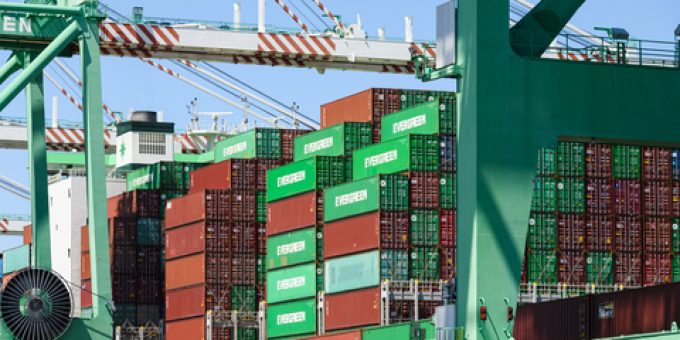Back to work order sees Canadian ports reopen to a battle against backlogs
Operations have resumed at strike-hit ports across Canada, but the work stoppage has resulted in ...
MAERSK: BULLISH CALLXPO: HEDGE FUNDS ENGINEF: CHOPPING BOARDWTC: NEW RECORDZIM: BALANCE SHEET IN CHECKZIM: SURGING TGT: INVENTORY WATCHTGT: BIG EARNINGS MISSWMT: GENERAL MERCHANDISEWMT: AUTOMATIONWMT: MARGINS AND INVENTORYWMT: ECOMM LOSSESWMT: ECOMM BOOMWMT: RESILIENCEWMT: INVENTORY WATCHDSV: GREEN LIGHT AMZN: TOP PICK
MAERSK: BULLISH CALLXPO: HEDGE FUNDS ENGINEF: CHOPPING BOARDWTC: NEW RECORDZIM: BALANCE SHEET IN CHECKZIM: SURGING TGT: INVENTORY WATCHTGT: BIG EARNINGS MISSWMT: GENERAL MERCHANDISEWMT: AUTOMATIONWMT: MARGINS AND INVENTORYWMT: ECOMM LOSSESWMT: ECOMM BOOMWMT: RESILIENCEWMT: INVENTORY WATCHDSV: GREEN LIGHT AMZN: TOP PICK

The container congestion contagion effect appears to be manifesting itself in Taiwan with a recent build-up of boxes in its main gateway of Kaohsiung.
Congestion in south-east Asia’s key ports has prompted liner operators to divert transhipment containers to Taiwan’s main container port which, in turn, placed Kaohsiung’s road infrastructure under pressure as more trucks are needed to ferry containers between terminals.
A representative of the country’s port authority, Taiwan International Ports Corporation (TIPC), said: “Mainline operators have been omitting calls to Singapore, Port Klang and Vietnam’s Cai Mep port due to congestion caused by disrupted schedules attributed to the Red Sea crisis. So they decided to divert some containers to Kaohsiung to be transhipped instead.”
Consequently, Kaohsiung processed 815,000 containers in June, up 13% year-on-year. Of this, transhipments comprised 375,000 containers, a 12% year-on-year increase.
EconDB’s data shows that in Kaohsiung, dwell time is seven days for inbound containers, nine days for outbound containers and eight days for transhipments.
According to the eeSea liner database, last week congestion levels in Kaohsiung surpassed Singapore in terms of numbers of vessels waiting to berth – in week 28, some 28% of container vessels at Kaohsiung were waiting to berth, compared with 22% in Singapore, while this week those ratios were 26% and 23% respectively.
TIPC is acting to ease the pressure by building dedicated road lanes for trucks. Terminal operators are also encouraged to barge containers between terminals to minimise truck transport.
Three sections of the container truck lane connecting Jinhai Road 2 and 3 to Nanxing Road will be completed in the second half of the year, and the last section will be completed in March next year.
To reduce reliance on trucking, TIPC has asked Evergreen Marine Corporation, which operates Kaohsiung’s Terminal 7, to barge more containers from Terminals 3 to 5 to its facility. Currently, about 20,000 containers can be barged every month.
Meanwhile, municipal authorities are using artificial intelligence to control traffic signals.
In a media interview last week, Taiwan’s Minister for Transportation and Communications, Li Meng-yen, said that Taiwan’s three largest liner operators, EMC, Yang Ming and Wan Hai Lines, account for 10% of the world’s container traffic and contribute heavily to Taiwan’s economy.
Therefore, the Ministry of Transportation and Communications is upgrading port infrastructure, including the extension National Highway 7 to Kaohsiung.
Comment on this article